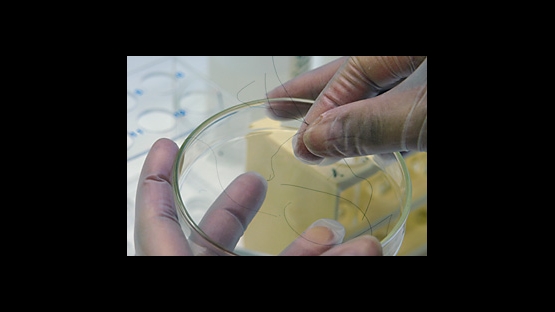Criminal investigators have long relied on an array of forensic tools to help them solve crimes. Nuclear techniques stand among them, and are gaining more attention among law enforcement authorities and police forces worldwide. The IAEA is working to share experience and improve analytical capabilities in the field, particularly in developing countries.
Experts from five countries - Argentina, Australia, Germany, Italy, and Turkey - met in November 2003 at the IAEA to review the use of nuclear techniques in forensic applications. Such techniques include neutron activation analysis, X-ray fluorescence, proton induced x-ray emission, and gamma spectrometry, for example, which are carried out by specialists at scientific laboratories. As a complimentary tool to conventional investigation methods, nuclear analytical techniques can provide additional evidence to clarify criminal cases. They are non-destructive and sensitive enough to characterize small and potentially incriminating samples for evidence. Specialists can analyze tiny traces (parts-per-billion) of elements in a single hair, saliva, or gun shot residue, for instance. Additionally, a technique involving carbon-14, widely used for radioactive dating of objects, is used in a special technique (called "bomb pulse") for recent dating (1960-present), which aids investigations of fraud or illicit trade.
Drawing on reported cases worldwide, the IAEA now is documenting experience in the field, including case studies highlighting the use of nuclear techniques in countries where they are extensively applied. The November meeting of experts was initiated to compile information for updating where abd how nuclear and related techniques are being used for police investigations of criminal cases and anti-terrorism activities. The information aims to suppport researchers and legal authorities in developing countries who seek to develop their capabilities for effectively using nuclear techniques in criminal investigations.
The work is in addition to the Agency's activities related to the emerging new field of “nuclear forensics”, which focuses on analyzing the nature, use and origin of nuclear materials through determination of radioisotopes, isotopic and mass ratios, material age, impurity content, chemical form and physical parameters. Analytical methods developed for nuclear forensic applications are used in international safeguards and for preventing illicit nuclear trafficking.





